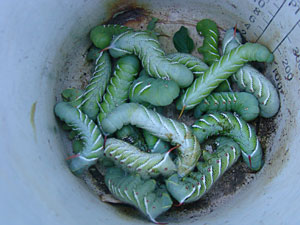Tips for Lower-risk Pest Control
Products are available that have less risk to the user and others. Select these whenever appropriate.
- First, consider non-chemical control methods for your pest. Hand-picking insect pests is a tried-and-true control method that still works. A pesticide may not be needed.
- If you need a pesticide, start with the lowest-risk product that will do the job.
- Use sticky traps to reduce the number of insects.
- Select products that have less risk to beneficial insects.
- Consider diatomaceous earth to control soft-bodied insects.
- Use horticultural oils to smother pests. There are different types, and some can only be applied to dormant plants. Make sure you read and follow the label directions.
- When using insecticidal soaps to kill insects, be sure to coat surfaces thoroughly.
- Botanical insecticides derived from plants are less toxic to mammals and birds.
- Microbial insecticides such as Bacillus thuringiensis (Bt) target specific types of insects and will not harm most beneficial insects, birds or animals. They must be eaten by the pests in order to kill them. Pick the right variety for your pest.
- When using traditional products, apply a selective pesticide whenever possible.

Control tomato hornworms the old-fashioned way.
Pick them off the plants and squash them.
Hefner, M.
2019,
Tips for Lower-risk Pest Control,
Extension | University of Nevada, Reno, IP


